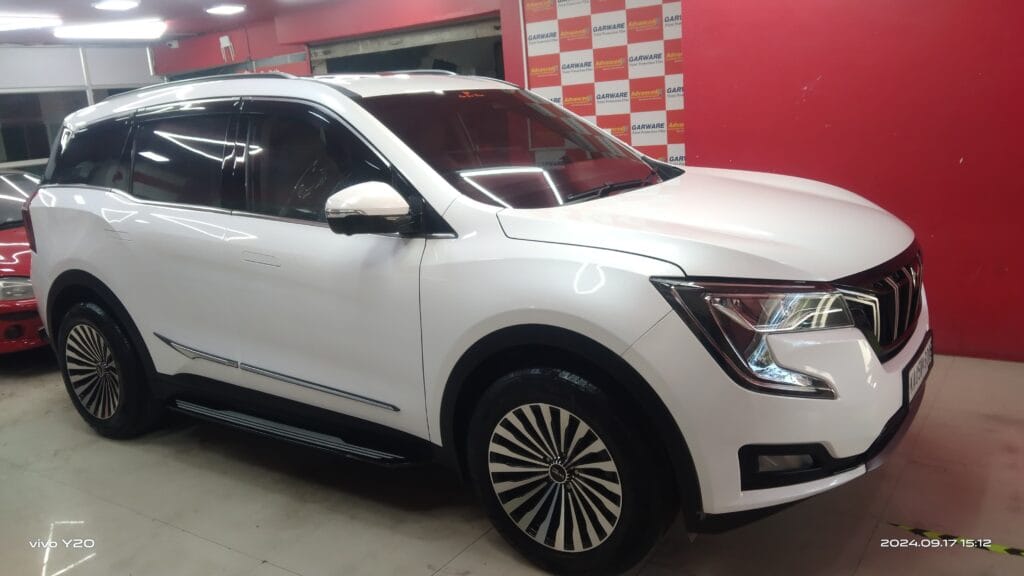If you’re a car enthusiast or just someone who values the appearance and longevity of their vehicle, finding the right Paint Protection Film (PPF) is crucial. PPF acts as a shield against scratches, rock chips, and other forms of wear and tear, preserving your car’s aesthetic appeal. With various options on the market, choosing the best PPF can be overwhelming. Here’s a guide to help you navigate your choices and find the perfect PPF for your vehicle.
1. Understand Your Needs
Assessing your specific needs is the first step in choosing the best Paint Protection Film (PPF) for your car. Start by identifying the primary concerns you want to address with PPF. If your vehicle frequently encounters harsh conditions like road debris or insect splatter, you might need a thicker, more durable film. For those looking to safeguard against minor scratches and maintain a flawless finish, a standard PPF could be sufficient.
Consider the areas of your vehicle most prone to damage when selecting the best paint protection for cars. High-impact zones, such as the front bumper, hood, and side mirrors, are prime candidates for PPF application. For these high-risk areas, a self-healing film can be particularly advantageous, as it can recover from minor scratches on its own. On the other hand, if you prefer overall coverage with less emphasis on specific spots, a general protective film might be the best paint protection for cars in your situation.
Understanding your needs also involves evaluating how much you value aesthetics versus functionality. For instance, if you prefer a glossy finish, high gloss PPF will enhance your car’s shine while offering protection. On the other hand, if a matte finish suits your style, matte PPF can give your vehicle a unique look while still providing protection.
2. Types of PPF
Self-Healing PPF: Self-healing PPF is a popular choice due to its advanced technology. It contains a special topcoat that can heal minor scratches and swirl marks over time. This is achieved through the heat of the sun or a hot water treatment, which softens the film and allows it to return to its original smooth state. This type of PPF is ideal for those who want to maintain a pristine appearance without frequent touch-ups. It offers excellent protection against environmental hazards and daily wear and tear, making it a smart choice for high-impact areas like the front bumper and side mirrors.
Matte PPF: For those who prefer a distinctive, non-glossy finish, matte PPF provides a unique look while offering protection. This type of film not only protects your car’s paint from scratches and UV damage but also transforms its appearance. Matte PPF is popular among those looking to give their vehicle a custom, stealthy look. However, it’s worth noting that matte films can be more challenging to clean, as they tend to show fingerprints and dust more than glossy options.
3. Quality and Durability
Thickness: The thickness of PPF is an important factor in determining its protective capabilities. Typically, PPFs range from 6 to 8 mils in thickness. Thicker films offer greater protection against impacts and scratches but may be less flexible and harder to install. Conversely, thinner films might provide less protection but are easier to apply and conform to complex surfaces. When selecting a PPF, consider your vehicle’s usage and the level of protection needed for various areas.
Warranty: A good warranty is a key indicator of PPF quality. Most reputable PPF brands offer warranties ranging from 5 to 10 years, covering issues like discoloration, peeling, and defects. A comprehensive warranty provides peace of mind and assurance that the film will perform as expected over time. When evaluating warranties, check the details to ensure they cover all potential issues and are backed by a reliable company.
4. Brand Reputation and Reviews
When choosing the best Paint Protection Film (PPF), brand reputation plays a crucial role in ensuring quality and performance. Established brands with a strong track record in the industry are often more reliable, as they have consistently demonstrated their product’s effectiveness over time. Look for brands that have garnered positive feedback from both automotive experts and everyday car owners.
Professional Reviews: Seek out reviews from professional automotive forums and publications. Experts in the field often provide detailed evaluations of PPF brands, discussing aspects like ease of application, durability, and overall effectiveness. Their insights can help you make an informed decision based on technical performance and real-world applications.
Customer Feedback: Additionally, customer reviews can offer a glimpse into the everyday experiences of other car owners. Platforms like online forums, review sites, and social media can provide a range of opinions, highlighting both strengths and potential issues. Pay attention to recurring themes in reviews, such as common complaints or praised features, to gauge the overall satisfaction with a particular brand.
By thoroughly researching brand reputation and customer feedback, you can select a PPF that aligns with your expectations for quality and reliability.
5. Cost Considerations
When selecting the best PPF for cars, cost is an important factor, but it should not be the only consideration. PPF prices can vary greatly, with more affordable options sometimes compromising on material quality or durability. Higher-quality films, though pricier, generally provide superior protection, longer-lasting results, and a more visually appealing finish.
- Basic vs. Premium: Basic PPFs may be more affordable but might lack advanced features like self-healing or superior clarity. Premium films, while pricier, provide enhanced protection and a longer lifespan, making them a better investment in the long run.
- Total Cost: Factor in not just the cost of the film but also installation fees. Professional installation ensures a flawless application, which is crucial for optimal performance. DIY kits might save money but can lead to additional costs if errors occur.
6. Maintenance and Care
Proper maintenance is key to ensuring that the best PPF for cars continues to perform optimally and maintain its appearance over time. Although PPF is designed to be low-maintenance, some care is still necessary to maximize the lifespan and effectiveness of the best PPF for cars.
- Regular Washing: Wash your car regularly with a mild detergent to keep the film clean. Avoid abrasive sponges or harsh chemicals that could damage the PPF.
- Avoid High Temperatures: Parking in direct sunlight or near heat sources can affect the film’s performance. Whenever possible, park in shaded areas or use a car cover.
- Self-Healing Features: If you have a self-healing PPF, minor scratches will disappear over time with exposure to heat. Keeping your car in a warm environment can help this process.
By balancing cost considerations with proper maintenance, you’ll ensure that your PPF provides the best protection and longevity for your vehicle.
Conclusion
Finding the best PPF for your car involves understanding your protection needs, choosing the right type of film, and ensuring high-quality installation. By considering the factors mentioned above, you’ll be well-equipped to select a PPF that enhances and preserves your vehicle’s appearance for years to come. Happy driving, and may your car stay pristine with the perfect PPF!



